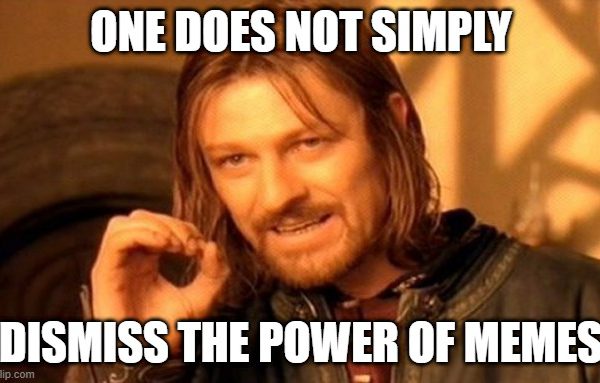The Nagaoka Review team had an online interview with Zohrab Chong, a veteran with over two decades of experience in the people development industry to understand more about Leadership, and what it takes for someone to become a better Leader

The year 2020 has been nothing short of surprises with the recent pandemic and no end in sight. Around the world, the reality of everyone varies depending on government policies, the severity of the pandemic, socio-economic situation, healthcare at over-capacity. The traditional face-to-face people interactions were cancelled. Schools quickly shifted online while conservative corporations struggle to embrace the Work From Home (WFH) culture. People who have never used the camera function on their laptops are quickly finding themselves attending back-to-back virtual meetings on various platforms. And the appreciation for the front liners battling the pandemic rises.
The panic of having to make sudden changes has set in earlier, and slowly trickling off in countries prepared for a pandemic. Learning from their successes and failures, other countries are emulating the good and putting a flag on the failures as to avoid repeating the mistakes. And all these learnings could not have come if there were no Leaders who took responsibility in search for solutions in preventing the further spread of the virus.
To note, it is in fact the leadership in search for solutions, not in search for someone to blame, that has made it possible for some countries to see the light at the end of this dark, pandemic-driven tunnel. And that is how Good Leadership looks.
“To be a leader, one must also possess the quality of humility and servitude. That means that we do not know everything, nor are we always in command. We must enable others to take the lead when they are more capable than us, and we just follow them at that point.
But… To be a better leader, one has to be a better follower.
Zohrab Chong, Enablers

What does Leadership mean?
A simple definition of Leadership goes like this: Leadership is an action and a responsibility one takes in a situation that leads to an outcome. One is only a Leader when there are followers. And one does not need to be given a title to be a Leader.
But we don’t want to stop there. Just like a spectrum, Leadership can go in different direction. It could tank to the positive side with a Leader who inspires their team members by enabling them. Or it could go towards toxic leadership that incites fear and blind obedience.
An accomplished Leader is someone who would put their people first. Someone ready to be humble enough to allow another person to lead when necessary. Someone willing to follow another person when they do not have the knowledge or expertise to lead in a situation.
The concept of being a “follower” is inferior
It is indeed interesting to hear people holding the assumption that being a follower is “inferior”. And the belief that pepole at a certain age (for example, above 40) should be looked upon as a leader and not a follower.
One would definitely be naïve to believe or hold that thought. In life, leading and following is dynamic. It interchanges from time to time. And there is no reason to lead if there is no follower. And when there is no follower, there is no leader.
Someone once told me, “to be a better leader, you have to be a better follower. A better follower is someone humble yet respecting of others in carrying out the given task or responsibility at a particular given time”. A good follower would follow their leader wholeheartedly and support their leader fully. And with better followers of such mindset, the foundation of trust will be strengthened for better collaborative approach towards the common goal.
“Everybody has an equal stand or value”
Why is it that people would depend on you to complete the task once the decision is agreed upon? Chances are, because you have the capability and capacity – therefore, this is one position of follower whereby you are playing the role. The leader in this instance may not have the know-how and hence need the “followers” to play their part.
Let’s take the example of a company that sees the need to automate their financial reporting. In this situation, it is understood that the IT and Finance personnel are the ones dealing with the situation daily. The Chief Financial Officer (CFO) and Chief Information Officer (CIO) as the leader of both departments will empower their experts to work together to find a feasible solution to reach the end goal. The Chief Executive Officer (CEO) in turn, would show trust by being the sponsor of the change and pledge support to assist in making the suggestions from the experts a reality.
The Role of a Follower
A follower has an important role to play in the team. One must know what is expected of them, must be willing to take ownership and be responsible to deliver what is being expected. Besides that, one also must understand the importance of two-way communication. Having to take courage in speaking up, channeling feedback to the leader to ensure that any issues or potential problems are made known. The purpose is to resolve matters as one, to move forward and complete the end-goal in mind. The sense of belonging should resonate between the leader and the follower to go in the same direction and achieve the same goal(s).
A purpose-driven follower is one who is aligned on the end in mind with their leader. One who understands the purpose of the action of the leader and can follow the direction. But of course, this is the ideal definition. In reality, there will be many misunderstandings and disagreements. The path to being a great purpose-driven leader and follower is one that is laden with challenges.

Challenges of being a Follower
Imagine being in the corporate environment setting. The usual challenges that occur are: unclear objectives, misalignment along the chain of command, people-related problems, miscommunication, and the list goes on.
Under such circumstances, communication is key. Being able to consult and share feedback between leaders and followers is a step to clarity. If changes could result in a win-win situation, it benefits everybody. But reality does not always work this way. The best is to always seek as much understanding from the other party and do your best.
The moral purpose of everyone after choosing the role and the company is to give their best. Think of work as worship, whereby one is required to give their honesty and truthfulness to achieve the best possible outcome. But if it does not work out, there is no shame in opting to go elsewhere. There will always be a happy place for everyone in the world, and everyone is different. Not everyone is a tea drinker!
How do people learn how to become leaders?
Common questions asked in leadership programs are:
- Is there only ONE way to develop leaders?
- Does attending leadership program guarantee success?
- How do leaders become great leaders?
The truth is. there is no real answer to the questions above. Research has been done by education specialists and professionals in People Development, trying to find workable solutions. But human beings are wired and programmed differently, hence the lack of “one-size-fits-all” approach to learning how to become a great leader. Plus, leadership is not like magic. It takes a lot of hard work of fine-tuning over the years.
According to research and textbooks, there are different leadership styles, e.g. authoritarian, paternalistic, “know-it-all”, manipulative, democratic and now, transformative leadership style. But it all boils down to this key question: Which one is better than the other? And the answer is None.
Knowing that different situation calls for different approaches, it ultimately depends on the expected outcome and choosing the right approach to achieve the intended goal. And how do we know if that method is successful?
The best way to discover what works or not is by acting on it and analyzing the outcome. Regardless of the success or failure of the approaches taken, one should always reflect and learn from the action taken. One should have no fear experimenting different approaches, and learn to embrace failure as a learning step closer to success. Especially if it is in a business setting dealing with teams, one should always record and share their findings with the team as a part of the learning process.
Hands-on leadership helps to bridge the gap between team members and leaders. By being closer to the people who are experiencing the challenges, the leader will have a better perspective on the problems faced rather than leading from the ivory tower. The trust and bond built between leaders and their team members will help them progress better.
The 70-20-10
This supports the notion of 70-20-10 in how any development can be effective. And the best way for one to learn is through experience. It could be acquired on the job, but it is not confined to just work. One could also learn the same capabilities and skills at home and in social spaces. But the biggest enabler comes from the foundation of putting the people first.

Essential Skills to be a Better Follower
There are great essential skills one needs to hone, in order to become a better follower. Allow me to break it into 4 domains: Mindset & Virtues, Tech & Tools, Managerial, and Social skills.

These skills highlighted above are not meant to be considered stand-alone capabilities. It requires one to apply the right skill and mindset to a situation or the core areas of accountability in becoming an effective follower and leader. Each of us have area(s) of expertise or unique skills. So, when one who is a follower could offer their skills or capabilities in solving the situation, everyone wins.
Especially when one works in a multi-disciplinary team with people from different background (imagine popular in creative companies such as IDEO), it is important for members to have the humility to take a step back and allow the subject matter expert to lead, or have courage to take on leadership role in area(s) one is confident.
In summary
Leadership is all about delivering the ultimate goal through the involvement, engagement, and empowerment of team members. In delivering the ultimate goal, the leader has to gain enough information from their people and lead everyone towards the same direction. As such, it is wise to never forget to put people first.
Humility is the key to opening meaningful conversation between team members. Have an open mind and give people the benefit of the doubt. Becoming a “giver” and letting one’s guard down a little could help in establishing better rapport. Invest time in getting to know people more. Include them in conversations, no matter how trivial or important the discussion is. Engage them in the conversation, ask for their opinion and have two-way discussions. Trust cannot be built overnight or only through work engagements . It takes time. But the end-result always justifies the effort.
So, are you ready to trade places and take on the role of a follower or a leader when situation arises?
About Zohrab Chong

A passionate people development practitioner with over two decades of corporate exposure, Zohrab has covered international diverse roles and responsibility in the financial and non-financial industry in Malaysia, Indonesia, Hong Kong and Singapore.
Zohrab is frequently engaged as a speaker, panelist, facilitator and moderator in the areas of Industrial Revolution 4.0 and Digital Transformation to share his expertise and experience in leadning and delivering Future Ready Skills programs and digitalization projects to achieve efficiency and effectiveness.
He founded Enablerz in providing advisory and people development services in the core areas of digital transformation, managerial capability development and facilitation skills to enable business transformation to happen through people development.
Image of men rowing boat by Mitchell Luo via Unsplash










